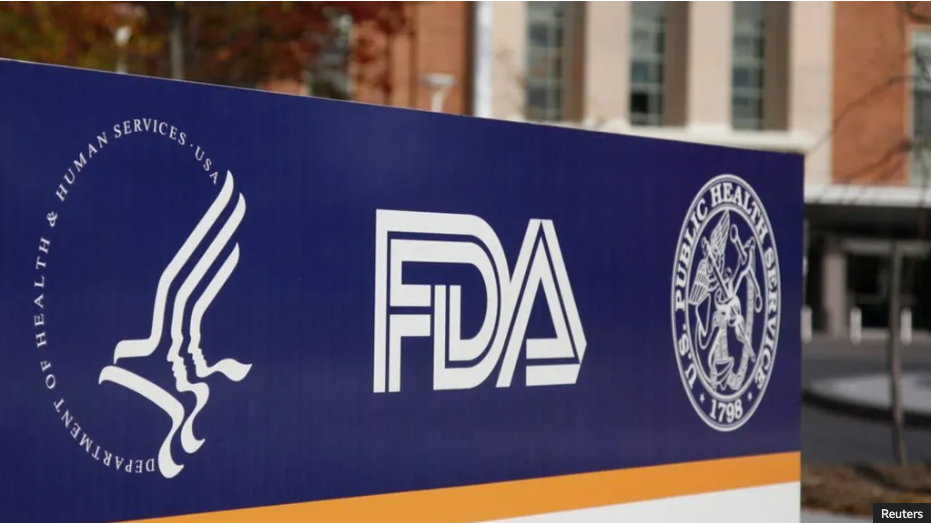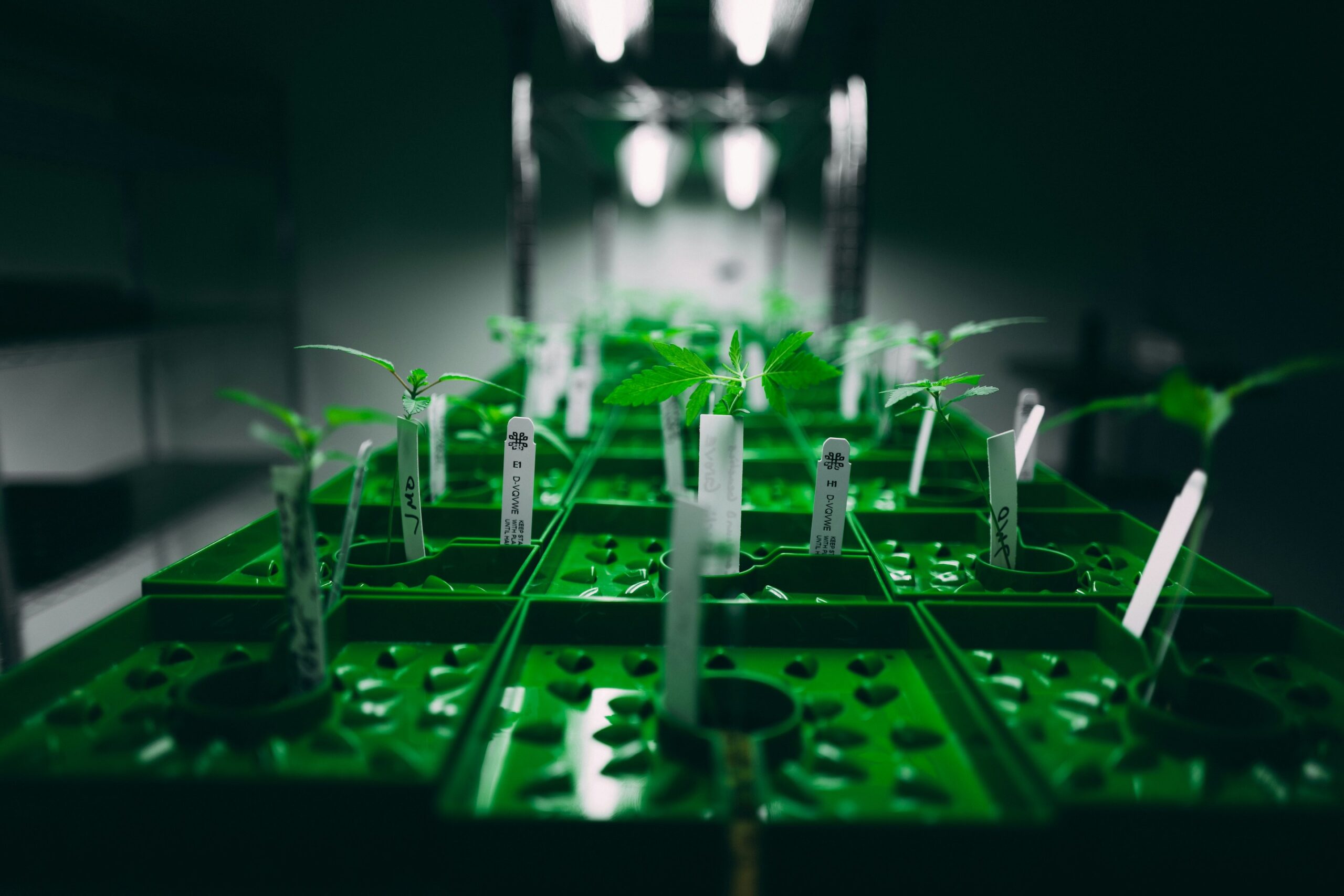Weekly Cannabis News
August 12th – August 19th, 2022
Post-Traumatic Stress Disorder (PTSD) & Cannabis Use During COVID-19
Individuals who reported an increase in cannabis consumption during the pandemic displayed worsening depressive symptoms, a new study suggests.
According to the American Psychological Association, post-traumatic stress disorder (PTSD) is defined as an anxiety problem that develops after extremely traumatic events, such as combat (e.g., affecting war veterans), crimes, accidents, or natural disasters. [1] This results in frequent flashbacks, nightmares, and increased anxiety, leading to decreased sleep time and quality. [2],[3] Additionally, external stressors such as the COVID-19 pandemic can exacerbate stress, anxious, and depressive symptoms, particularly in individuals with a PTSD diagnosis. [4]
Increasing evidence suggest that PTSD is a known risk factor for increased substance use such that increased depressive and anxious symptoms can increase cannabis consumption in this group of individuals. [5],[6] As such, the endocannabinoid system (ECS) plays important roles in the regulation of stress, depressive, and anxiety behavior as individuals with PTSD have reduced availability of the endocannabinoid anandamide and upregulation of the cannabinoid receptor 1 (CB1R). [7],[8] However, additional studies investigating the link between mental health and cannabis use in PTSD individuals because of the COVID-19 pandemic are needed.
A group of researchers at the University of Ottawa obtained web-based surveys from 462 participants from April 3rd to June 24th, 2020 (first wave of the pandemic in Canada) who self-reported PTSD with varying levels of cannabis intake including increased (54 individuals), no change (66 individuals), decreased (40 individuals) and non-cannabis 303 individuals). [9] They assessed whether cannabis consumption or not affected perceived stress, anxiety and depression symptoms, and clinically important worsening before and after COVID-19. While all groups expressed worsening of stress, anxiety, and depression symptoms, individuals who increased cannabis intake demonstrated a significant increase in depression scores from before to during the pandemic.
Some of the study limitations noted by the group included the lack of information regarding frequency of use, dosage, or phytocannabinoids composition and reliability on self-reported diagnosis.
The authors concluded: “Overall, those who increased cannabis use during the pandemic were more prone to undergo meaningful perceived worsening of depression symptoms… Future work should aim to prospectively determine whether depression or other comorbidities not addressed in this study are predictive of longitudinal changes in cannabis intake in people PTSD over the remaining course of the pandemic and, most importantly, whether this is accompanied by further worsening in mental health outcomes or whether cannabis may help stabilize certain types of psychiatric symptoms in the context of an external stressor.”
Impact of Cannabidiol (CBD) and ∆9-Tetrahydrocannabinol (∆9-THC) on Milk Proteins
While both compounds negatively regulated the synthesis of milk proteins, co-treatment with a cannabinoid receptor 2 (CB2R) antagonist was able to reverse some of the induced effects.
Pregnancy is a very specific and complex period in a woman’s life, marked by altered physiological and biological changes, with common side effects including nausea, vomiting, swelling, fatigue, and sleep loss. To help reduce those symptoms, an increasing number of pregnant women are turning to cannabis-based products despite the evidence that it can cause harm to the unborn fetus. The offspring born to active cannabis mothers are more likely to have health consequences in later in life including increased risks for obesity or metabolic syndrome, decreased folic acid uptake, low birth weight, increased risk of premature birth, and alteration of prefrontal cortex development. [10] [11] [12] [13]Despite this, 44% of individuals in Canada aged 16 to 19 and 52% aged 20 to 24 are reporting cannabis use, urging the need to better understand its consequences on the female reproductive system. [14]
The cannabis plant is home to more than 500 known compounds including phytocannabinoids, terpenes and flavonoids, with as many as 140 different phytocannabinoids present including the non-psychoactive molecule, cannabidiol (CBD) and the psychoactive molecule, ∆9-tetrahydrocannabinol (∆9-THC). While studies have shown that both compounds can impact cellular differentiation and function, little is known about their potential impact on the differentiation of mammary epithelial cells (MECs), responsible for secreting lactose, fat, and milk proteins. [15],[16],[17],[18]
A group of researchers from the Department of Pediatrics and the Graduate Program in Medical Sciences at McMaster University in Ontario, Canada, aimed to investigate the effects of ∆9-THC and CBD on the differentiation of MECs via determining cellular viability, lipid accumulation, and gene and protein expression of major milk proteins using HC11 cells, mouse mammary epithelial cells used in research as an vitro model of mammary cell differentiation. [19] Firstly, they found that both compounds reduced cellular viability, levels of milk proteins, and lipid synthesizing and glucose transport markers. Secondly, co-treatment with a cannabinoid receptor 2 (CB2R) antagonist was able to reverse some of the CBD and ∆9-THC’s effects on some of the key expressed markers.
The authors concluded: “Reversal of the effects of THC and CBD following co-treatment with a CB2 receptor antagonist and agonist, respectively, indicates that THC and CBD may be impacting HC11 cell differentiation, in part through CB2. However more detailed investigation is required to further elucidate these findings.”
Cannabis Use & Incidence of Urological Cancers: Results from Questionnaires
This study showed cannabis use was associated with lower risk of bladder cancer, renal cell carcinoma and prostate cancer but not testicular cancer.
The cannabis plant is the most used substance in the world, with about 200 million individuals using the drug. Changes in its legal status are leading researchers and scientists to uncover its potential therapeutic applications for disease states but also understand the negative implications associated with its use. While long-term cannabis use may be linked to cardiovascular toxicity or cognitive impairments, it can also help with nausea, vomiting, and neurological disorders. [20],[21] Additionally, reports have suggested that phytocannabinoids, cannabinoid compounded derived from the cannabis plant, can have anti-cancerous properties, and as such may be an attractive target to treat cancer. [22] However, studies investigating cannabis use impact on urological cancers are lacking. Few reports have shown that cannabis use was associated with a lower incidence of bladder cancer and that it can inhibit cell proliferation, migration, and angiogenesis in urological cancer cells. [23],[24]
Huang et al., aimed to further characterize the relationship between cannabis smoking and the incidence of a wide range of urological cancers from a population-based cohort within the UK Biobank. [25] They evaluated whether cannabis use (separated between never use cannabis and ever use cannabis) was associated with different urological cancers from more than 150 000 participants. Obtained results showed that previous cannabis use was a significant protective determinant for renal cell carcinoma (RCC) and prostate cancer. Additionally, looking at gender differences, previous cannabis use was associated with reduced risks of RCC and bladder cancer in women only. Finally, no associations were found between cannabis use and testicular cancer incidence.
Some of the study limitations included the lack of precision in classifying an occasional cannabis user, questionnaire-based surveys which may increase risks of bias, and the relatively low number of individuals with cancer.
The authors concluded: “Previous cannabis use correlated with a lower risk of bladder cancer, prostate cancer, and RCC. Especially, cannabis use had a causal effect on a lower incidence of RCC. The inverse association between cannabis and either RCC or bladder cancer was significant in females but not in males. However, no specific effect of ever or previous cannabis use on the incidence of testicular cancer was found in this study.”
Terpenes & Cancer Pain
Results from this animal study suggests that γ-terpinene (γ-TPN), a terpene found in the cannabis plant, may be beneficial to reduce cancer-associated pain.
Cancer pain is known impact one’s overall quality of life and is associated with significant public health problems. [26] Hyperalgesia (i.e., increased sensitivity to feeling pain and an extreme response to pain) and allodynia (i.e., pain due to a stimulus that does not normally provoke pain) induced by tumors can lead to increased pro-inflammatory profile, raising neuronal excitability. [27] One of the key elements that helps regulation neurotransmitter release and excitability of the nervous system is calcium. [28] As such, a class of agents called calcium blockers are investigated a potential attractive target to manage chronic pain in different conditions. [29] Additionally, terpenes, naturally occurring chemical compounds responsible for the way most plants smell, have a wide range of biological and pharmaceutical activities including antifungal, antiviral or anticancer properties. [30] One of which is γ-terpinene (γ-TPN), present in the cannabis plant, have been shown to exhibit analgesic, anti-inflammatory, antimicrobial and anticancer activity and modulate calcium channels. [31],[32] To improve efficacy of anti-inflammatory and analgesic drugs, a group of molecules called cyclodextrins have been proposed due to their pharmacological effects, lack of undesired side effects and low-cost delivery. [33],[34] However, the use of cyclodextrins, specifically β-cyclodextrins (β-CD) with γ-TPN in reducing pain have not been studied.
A group of researchers from Brazil used mice injected with sarcoma 180 (S180) ascites tumor cells as their experimental model, commonly used in cancer research due to its rapid growth and proliferation in mice. [35] The animals were then injected with either vehicle, β-CD alone or in the combination with γ-TPN or morphine and determined levels of mechanical hyperalgesia and pro-inflammatory cytokines, and any effects on calcium channels.
Results showed that mechanical hyperalgesia was reduced in the mice treated with β-CD alone or in the combination with γ-TPN while also reducing the levels of pro-inflammatory cytokines compared to vehicle-treated mice. Additionally, γ-TPN-treated animals displayed reduced calcium current, suggesting it likely can modulate nociception by reducing the release of excitatory neurotransmitters, and may be a good agent to reduce pain.
The authors concluded: “These findings show that the complexation of γ-terpinene to β-cyclodextrin may be an interesting therapeutic strategy for the control of chronic painful conditions, such as cancer pain. However, deeper additional studies are needed before its clinical use.”
References:
[1] https://www.apa.org/topics/ptsd, assessed on August 19th, 2022
[2] Olff M. Sex and gender differences in post-traumatic stress disorder: an update. Eur J Psychotraumatol 2017 8(sup4): 1351204.
[3] Giarratano P, Ford JD, Nochajski TH. Gender Differences in Complex Posttraumatic Stress Symptoms, and Their Relationship to Mental Health and Substance Abuse Outcomes in Incarcerated Adults. J Interpers Violence 2020;35:1133-57.
[4] Lakhan R, Agrawal A, Sharma M. Prevalence of Depression, Anxiety, and Stress during COVID-19 Pandemic. J Neurosci Rural Pract 2020;11(4):519-25.
[5] Kevorkian S, Bonn-Miller MO, Belendiuk K, Carney DM, Roberson-Nay R, Berenz EC. Associations among trauma, posttraumatic stress disorder, cannabis use, and cannabis use disorder in a nationally representative epidemiologic sample. Psychol Addict Behav 2015;29(3):633-8.
[6] Young-Wolff KC, Sarovar V, Tucker LY, Goler NC, Alexeeff SE, Ridout KK, et al. Association of Depression, Anxiety, and Trauma With Cannabis Use During Pregnancy. JAMA Netw Open 2020;3(2):e1921333.
[7] [Neumeister A, Normandin MD, Pietrzak RH, Piomelli D, Zheng MQ, Gujarro-Anton A, et al. Elevated brain cannabinoid CB1 receptor availability in post-traumatic stress disorder: a positron emission tomography study. Mol Psychiatry 2013;18(9):1034-40.
[8] Hill MN, Patel S. Translational evidence for the involvement of the endocannabinoid system in stress-related psychiatric illnesses. Biol Mood Anxiety Disord 2013;3(1):19. DOI: 10.1186/2045-5380-3-19
[9] Murkar A, Kendzerska T, Shlik J, Quilty L, Saad M, Robillard R. Increased cannabis intake during the COVID-19 pandemic is associated with worsening of depression symptoms in people with PTSD. BMC Psychiatry 2022;22(1):554.
[10] de Wit CC, Sas TC, Wit JM, Cutfield WS. Patterns of catch-up growth. J Pediatr. 2013;162(2):415-420
[11] Moore BF, Sauder KA, Shapiro ALB, Crume T, Kinney GL, Dabelea D. Fetal Exposure to Cannabis and Childhood Metabolic Outcomes: The Healthy Start Study. J Clin Endocrinol Metab 2022. DOI: 10.1210/clinem/dgac101.
[12] Martin GI. Marijuana: the effects on pregnancy, the fetus, and the newborn. J Perinatol 2020;40(10):1470-6.
[13] Sherwood RA, Keating J, Kavvadia V, Greenough A, Peters TJ. Substance misuse in early pregnancy and relationship to fetal outcome. Eur J Pediatr 1999;158(6):488-92.
[14] https://www.canada.ca/en/health-canada/services/drugs-medication/cannabis/research-data/canadian-cannabis-survey-2020-summary.html, assessed on August 19th, 2022
[15] Cline PR, Zamora PO, Hosick HL. Morphology and lactose synthesis in tissue culture of mammary alveoli isolated from lactating mice. In Vitro 1982;18(8):694-702
[16] Rudolph MC, Neville MC, Anderson SM. Lipid synthesis in lactation: diet and the fatty acid switch. J Mammary Gland Biol Neoplasia 2007;12(4):269-81
[17] Silberstein GB. Postnatal mammary gland morphogenesis. Microsc Res Tech 2001;52(2):155-62.
[18] Gurm H, Hirota JA, Raha S. Cannabinoid Signalling in Immune-Reproductive Crosstalk during Human Pregnancy. Biomedicines 2021;9(3).
[19] Josan C, Podinic T, Pfaff N, Raha S. Effect of Delta-9-tetrahydrocannabinol and cannabidiol on milk proteins and lipid levels in HC11 cells. PLoS One 2022;17(8):e0272819.
[20] Schep LJ, Slaughter RJ, Glue P, Gee P. The clinical toxicology of cannabis. N Z Med J 2020;133(1523):96-103.
[21] Kichloo A, Albosta M, Aljadah M, El-Amir Z, Goldar G, Khan MZ, et al. Marijuana: A systems-based primer of adverse effects associated with use and an overview of its therapeutic utility. SAGE Open Med 2021;9:20503121211000909.
[22] Anis O, Vinayaka AC, Shalev N, Namdar D, Nadarajan S, Anil SM, et al. Cannabis-Derived Compounds Cannabichromene and Delta9-Tetrahydrocannabinol Interact and Exhibit Cytotoxic Activity against Urothelial Cell Carcinoma Correlated with Inhibition of Cell Migration and Cytoskeleton Organization. Molecules 2021;26(2).
[23] Thomas AA, Wallner LP, Quinn VP, Slezak J, Van Den Eeden SK, Chien GW, et al. Association between cannabis use and the risk of bladder cancer: results from the California Men’s Health Study. Urology 2015;85(2):388-92.
[24] Singh K, Jamshidi N, Zomer R, Piva TJ, Mantri N. Cannabinoids and Prostate Cancer: A Systematic Review of Animal Studies. Int J Mol Sci 2020;21(17).
[25] Huang J, Huang D, Ruan X, Huang J, Xu D, Heavey S, et al. Association between cannabis use with urological cancers: A population-based cohort study and a mendelian randomization study in the UK biobank. Cancer Med 2022.
[26] Aman MM, Mahmoud A, Deer T, Sayed D, Hagedorn JM, Brogan SE, et al. The American Society of Pain and Neuroscience (ASPN) Best Practices and Guidelines for the Interventional Management of Cancer-Associated Pain. J Pain Res 2021;14:2139-64.
[27] Schmidt BL, Hamamoto DT, Simone DA, Wilcox GL. Mechanism of cancer pain. Mol Interv 2010;10(3):164-78.
[28] Mei Y, Barrett JE, Hu H. Calcium release-activated calcium channels and pain. Cell Calcium 2018;74:180-5.
[29] Perret D, Luo ZD. Targeting voltage-gated calcium channels for neuropathic pain management. Neurotherapeutics 2009;6(4):679-92.
[30] Hanus LO, Hod Y. Terpenes/Terpenoids in Cannabis: Are They Important? Med Cannabis Cannabinoids 2020;3(1):25-60.
[31] Ramalho TR, Oliveira MT, Lima AL, Bezerra-Santos CR, Piuvezam MR. Gamma-Terpinene Modulates Acute Inflammatory Response in Mice. Planta Med 2015;81(14):1248-54.
[32] Guimaraes AG, Quintans JS, Quintans LJ, Jr. Monoterpenes with analgesic activity–a systematic review. Phytother Res 2013;27(1):1-15.
[33] Zhang Y, Sun T, Jiang C. Biomacromolecules as carriers in drug delivery and tissue engineering. Acta Pharm Sin B 2018;8(1):34-50
[34] Lucia Appleton S, Navarro-Orcajada S, Martinez-Navarro FJ, Caldera F, Lopez-Nicolas JM, Trotta F, et al. Cyclodextrins as Anti-inflammatory Agents: Basis, Drugs and Perspectives. Biomolecules 2021;11(9).
[35] Pina LTS, Rabelo TK, Trindade GGG, Almeida IKS, Oliveira MA, Dos Santos PL, et al. gamma-Terpinene complexed with beta-cyclodextrin attenuates spinal neuroactivity in animals with cancer pain by Ca2+ channel block. J Pharm Pharmacol 2022.







